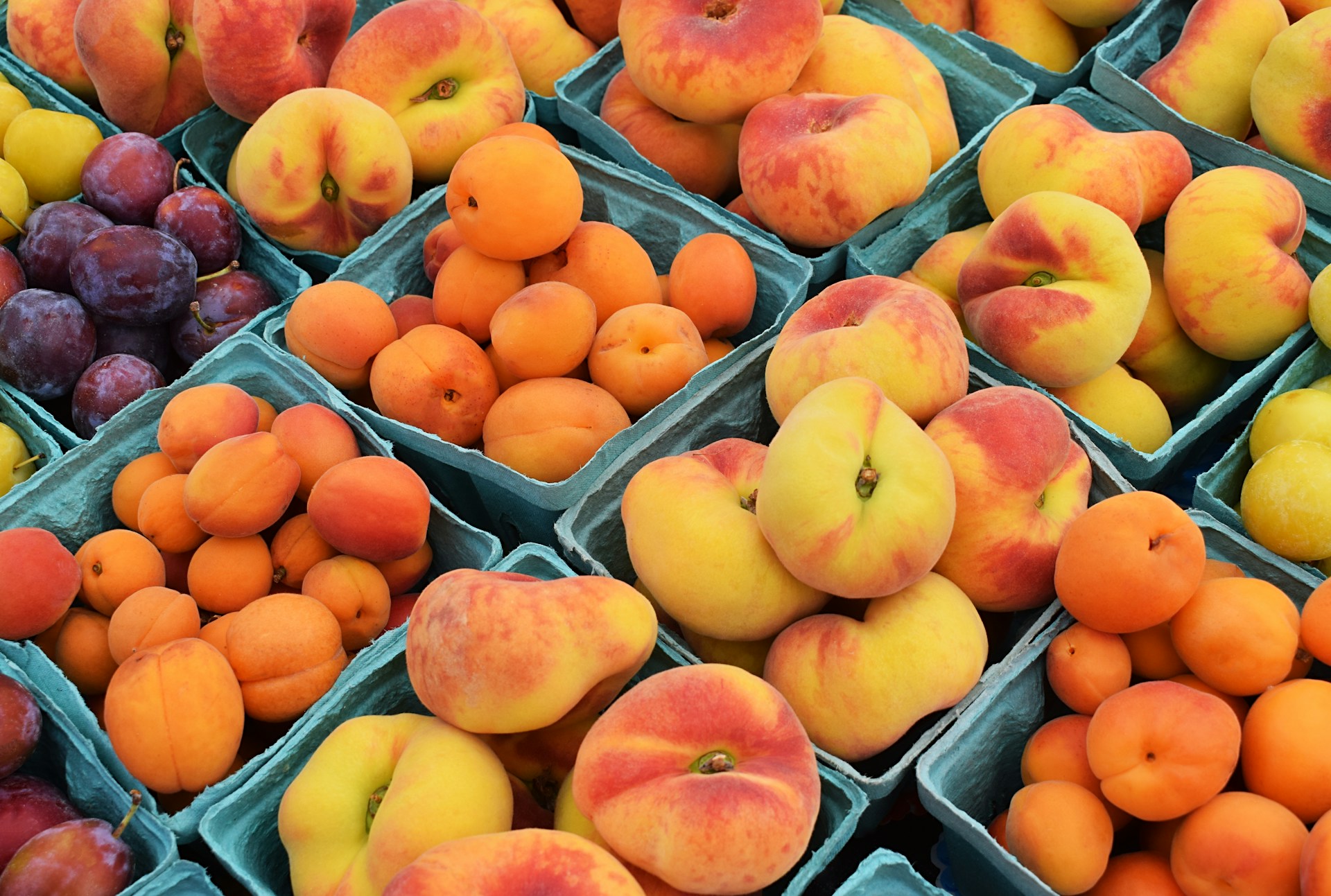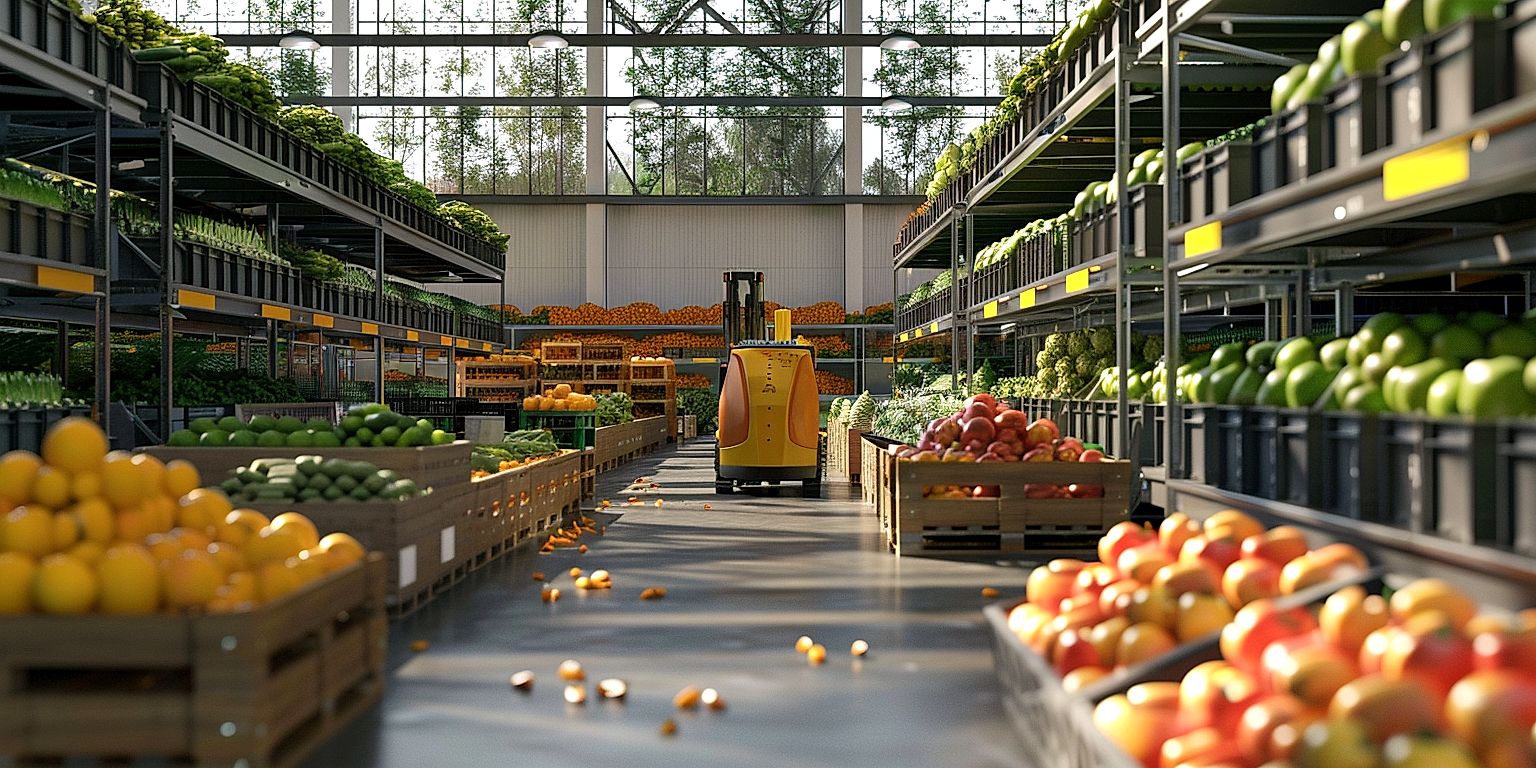The digital revolution carries profound implications for multiple sectors, including the produce industry.
Central to this transformation is the outgrowth of e-commerce platforms, altering the landscape of produce distribution.
This transition not only recasts consumer behaviours but also the underlying logistics that enable such transactions.
Understanding these impacts is crucial for businesses striving to thrive in this digitally-driven ecosystem.
This evaluation involves examining how e-commerce platforms have streamlined the distribution process, potentially engendering efficiencies and reducing costs.
It also entails exploring the potential challenges that accompany these technology-induced changes.
Contents
- E-commerce Impacts On Produce Distribution Logistics
- 1. Increased Demand for Direct-to-Consumer Shipping
- 2. Greater emphasis on temperature-controlled transportation.
- 3. Improved Tracking and Inventory Management
- 4. Enhanced Speed of Goods’ Delivery
- 5. Expanded Global Reach and Market Access
- 6. Increased need for sustainable packaging.
- 7. Heightened product quality and freshness standards.
- The Bottom Line
E-commerce Impacts On Produce Distribution Logistics
1. Increased Demand for Direct-to-Consumer Shipping
In the contemporary digital age, the e-commerce sector has seen a significant uptick in direct-to-consumer shipping.
As more and more consumers opt to shop online rather than in traditional brick-and-mortar stores, the logistics and transportation industry continually adapts to match this demand.
Specifically, in the realm of produce distribution, direct-to-consumer shipping provides freshness and convenience to the end consumer.
It eliminates the need for the produce to sit in warehouses and transit numerous times before it arrives at a store.
By offering direct shipping to the consumer’s doorstep, the amount of time from the produce being harvested to being consumed can be significantly reduced, which results in superior product quality.
Moreover, this trend has also been fuelled by a shift in consumer shopping habits and expectations, with many prioritizing speed and convenience.
They expect to receive their orders within a day or two, which places a significant strain on the producers and logistics providers, demanding them to enhance their delivery efficiency.
In addition to the pressure on delivery timelines, consumers also expect transparent communication about the status of their order.
They want to know exactly when their fresh produce will arrive, necessitating advanced tracking solutions for better visibility.
All of these conditions have led to increased demand for direct-to-consumer shipping, inevitably affecting the ways businesses strategise on their logistics and distribution systems.
The implementation of direct-to-consumer shipping significantly disrupts the traditional produce distribution model, forcing both suppliers and retailers to rethink their logistics strategies.
While this creates new challenges in terms of logistics and delivery mechanisms, it also provides opportunities for business growth and brand establishment in a direct-to-consumer model, reaching consumers directly without the need for intermediaries.
As a result, we are seeing the emergence of innovative logistics models designed to meet the unique requirements of direct-to-consumer shipping such as localized micro-fulfillment centers and revamped last-mile delivery strategies.
In conclusion, while the increased demand for direct-to-consumer shipping may present many challenges for the produce distribution logistics industry, it also introduces groundbreaking opportunities for innovation, efficiency enhancement, and direct customer relationships.
2. Greater emphasis on temperature-controlled transportation.
One significant impact of e-commerce on produce distribution logistics is the increased emphasis on temperature-controlled transportation.
This shift is primarily due to the infiltration of the e-commerce model into fresh food delivery, pushing the boundaries of traditional supply chains.
Distribution logistics for the fresh produce sector used to operate under a different set of rules, due to the short shelf-life and high perishability of these products.
But today, with consumers’ growing desire for convenient and fresh foods delivered to their doorstep, there’s a notable need for implementing reliable and efficient temperature-controlled transportation systems.
Temperature-controlled transportation has become a critical component of the fresh food e-commerce supply chain.
It ensures that perishable goods maintain their optimum temperature range throughout transit, thus preserving quality and preventing food waste.
The sophistication of temperature-controlled systems can significantly increase a company’s competitive edge in the e-commerce market.
Companies are investing heavily in designing efficient cooling systems, procuring specialized cold storage vehicles, and training staff in handling temperature-sensitive produce.
Moreover, they are constantly fine-tuning their logistics strategies to address the complexities of last-mile delivery, a decisive factor in maintaining temperature control through delivery.
To maintain ideal temperatures during transit, produce distributors use various technological solutions such as real-time temperature monitoring devices.
These devices, coupled with sophisticated software, allow tracking temperature deviations in real-time and instant corrective actions if required.
Aside from Track and Trace systems, IoT (Internet of Things) is playing an influential role in temperature-controlled logistics.
IoT technology enables the remote monitoring and control of refrigeration units, reducing human errors and strengthening the cold chain.
This level of attention to temperature-controlled transportation systems reflects not only the importance of maintaining product quality but also the intense competition among e-commerce food suppliers.
In essence, the rise of e-commerce is causing a paradigm shift in produce distribution logistics, with a pronounced focus on temperature-controlled transportation.
This change is fundamental to ensure the delivery of fresh, safe, and high-quality products to the end customer.
3. Improved Tracking and Inventory Management
With the rise of E-commerce and the resulting increase in direct-to-consumer shipping, the need for improved tracking and inventory management systems in produce distribution logistics has become critical.
The efficient tracking and management of inventory is an integral part of the E-commerce system.
In a highly competitive marketplace, it’s absolutely necessary to maintain an efficient and accurate inventory management system.
The ability to effectively manage inventory throughout the supply chain ensures the availability of goods when and where consumers want them.
Furthermore, enabling businesses to handle large volumes of produce can significantly reduce costs, avoid waste, and improve customer satisfaction.
E-commerce businesses are equipped with tools like real-time inventory tracking, which ensures that a clear and current picture of stock levels is always available.
Improved tracking systems not only help in maintaining a smooth supply chain but also contribute to environmental sustainability by reducing waste.
Use of barcodes and QR codes for tracking inventory has become a standard in the industry, providing real-time updates on the whereabouts and condition of goods.
The advent of technologies like RFID (Radio-frequency identification) and IoT (Internet of Things) has taken tracking and inventory management to a whole new level.
These technologies allow real-time updates on inventory levels and location, automating the entire logistics process.
Improved tracking not only ensures the efficient movement of goods but also helps in reducing the loss due to spoilage or damage during transit.
Moreover, in case of any issue regarding the quality of produce, tracking mechanisms can help trace back the goods to their source.
Sustainability is another huge focus in today’s produce distribution logistics, which is significantly aided by efficient tracking and inventory management systems.
By closely monitoring inventory and ensuring its timely delivery, businesses can reduce waste and overproduction, hence promoting sustainability.
Thus, the improved tracking and inventory management seen in E-commerce plays a crucial role not only in maintaining supply chain efficiency but also in ensuring quality, freshness, and sustainability.
In conclusion, as E-commerce continues to evolve, these systems will only improve, making tracking and inventory management the heart of produce distribution logistics.
4. Enhanced Speed of Goods’ Delivery
As e-commerce grows, consumers are developing an increased expectation for speedy delivery of purchased goods.
This trend is particularly relevant in the context of produce distribution, where the freshness of the product is directly linked to the speed of delivery.
Key players in the e-commerce marketplace, like Amazon, have set a high standard for quick turnarounds, offering options such as same-day or next-day delivery and raising customer expectations.
The expectation of expedited delivery is now a standard expectation in the minds of online shoppers, rather than a premium service.
Customers are no longer willing to wait for prolonged periods for their orders, and a delay could result in the deterioration of customer relationships.
This detail has placed a significant amount of pressure on distributors to not only maintain product quality but also reduce delivery times.
For produce distributors, this means a need to optimize logistics operations to ensure fast and effective delivery.
This challenge has led many to turn to technology, employing cutting-edge solutions to streamline operations and improve delivery times.
Delivery management systems, route optimization software, and real-time tracking are all ways in which distributors are leveraging technology to meet these expectations.
Moreover, they are also making strategic changes to their distribution networks by setting up local warehouses or distribution centers.
This measure is to reduce the distance covered during delivery and, as a result, the time taken.
Distributors are also working in partnership with delivery service providers who offer priority shipping services to meet consumer demands for speed.
These solutions not only help in enhancing the speed of goods’ delivery, but they also contribute to maintaining the freshness and quality of the produce.
While these changes do pose challenges and often require an investment of resources, they are integral to staying competitive in today’s e-commerce landscape.
The drive for enhanced speed of goods’ delivery extends beyond customer satisfaction and directly impacts the freshness and quality of the produce delivered, factors critical to the success of e-commerce in the produce distribution industry.
5. Expanded Global Reach and Market Access
With the advent of e-commerce, businesses now have the capacity to extend their operations beyond physical borders, impacting significantly on produce distribution logistics.
This expansion of reach and market access has been enabled by the globalization of digital platforms and the outsourcing of logistical services such as warehousing, delivery, and customer service to third-party providers.
The proliferation of international trade agreements and the ease of online transactions have also contributed to the expansion of market access for e-commerce businesses.
This ability to trade anywhere and anytime because of e-commerce is transforming the landscape of produce distribution logistics.
Previously restricted by location, businesses can now distribute their produce to a global customer base, significantly broadening their potential market.
However, this has also brought about new challenges in terms of maintaining product quality, freshness, and ensuring timely delivery.
For instance, e-commerce distribution center locations need to be strategically situated near major transport routes and hubs to facilitate quick and efficient international shipping.
Also, varying regulations and standards across different markets necessitate a more diverse approach to packaging and labeling.
Yet, businesses are being rewarded for navigating these complexities with higher sales volumes, wider brand exposure, and access to new growth opportunities.
Moreover, e-commerce has allowed small and medium enterprises (SMEs) to participate in international trade in ways that were previously reserved for larger corporations, creating a more level playing field.
Ironically, while internet access has made it easier for businesses to reach a global audience, it has also intensified competition as more businesses are vying for the attention of the same consumers.
Regardless of the size or nature of the business, the key to success in this global e-commerce landscape is efficient and effective produce distribution logistics.
Businesses that can consistently deliver quality produce in a timely and reliable manner will undoubtedly stand out among the competition and enjoy sustained growth in this expanding global market.
Therefore, the impact of e-commerce on produce distribution logistics has not only expanded the playing field but redefined the rules of the game for businesses worldwide.
The rise of e-commerce has undoubtedly transformed the logistics industry, forcing it to adapt and evolve in order to meet the needs of a rapidly growing and ever-changing global market.
6. Increased need for sustainable packaging.
With the increasing demand for e-commerce and home delivery services for produce, there comes an increased need for sustainable packaging.
E-commerce businesses have a profound impact on the global environment due to the high volumes of packaging waste they generate.
More and more consumers are becoming conscious about the environment and prefer to buy products that are sourced and packaged sustainably.
Thus, the packaging of produce for e-commerce distribution is shifting towards sustainability.
The focus here is not only on using materials that have less environmental impact but also on reducing the overall packaging.
This transformation has led to the exploration and usage of innovative, biodegradable, and recyclable packaging materials.
Sustainable packaging practices include not only using eco-friendly materials but also thinking about the whole lifecycle of the package.
This encompasses manufacturing, transportation, usage, and disposal to ensure minimal environmental impact.
Companies are investing in packaging designs that minimize material use, can be recycled easily or are made from recycled materials.
The move towards sustainable packaging is not just about environmental responsibility but also makes business sense.
It can enhance a company’s image, build customer loyalty, and may also lead to cost savings in the long term.
Furthermore, laws and regulations are increasingly leaning towards sustainability, pushing businesses to rethink their packaging practices.
Moreover, packaging solutions must also ensure the freshness and quality of produce until it reaches the consumer.
And this aspect can pose a significant challenge while considering eco-friendly packaging materials and designs.
The drive for sustainable packaging has opened up opportunities for several start-ups offering innovative solutions to these complex problems.
This entire process, although challenging, has led to a wave of innovation and collaboration towards achieving a common goal of sustainability.
7. Heightened product quality and freshness standards.
In the realm of e-commerce, especially with respect to produce distribution logistics, the emphasis on product quality and freshness has increased manifold.
Advances in technology and growing consumer expectations are pushing the industry to enhance its measures regarding the quality and freshness of the products.
E-commerce platforms have to ensure that their consumers receive high-quality and fresh produce every time they order, making the demand for superior quality and freshness standards higher than ever.
This increased necessity stems from the fact that the quality of the product directly impacts the reputation of the e-commerce platform.
In a competitive market, any compromise on the quality or freshness of the produce can lead to a potential loss of customers, damaging the e-commerce platform’s market standing.
The method of transportation, packaging, and the duration the produce remains in transit significantly contribute to the overall quality and freshness of the product.
Therefore, effective strategies need to be implemented and consistently followed to ensure that the produce maintains its quality from the farm to the consumer’s table, with no room for complacency.
As consumers increasingly favor fresh and high-quality items, they are more likely to trust and repeatedly utilize an e-commerce platform that consistently meets these high standards.
The need for temperature-controlled transportation and sustainable packaging materials, as previously discussed in this article, play a crucial role in maintaining the quality and freshness of the produce.
For instance, perishable items such as fruits and vegetables must be properly insulated and kept at the correct temperature to keep them fresh.
By doing so, an e-commerce platform can not only deliver high-quality and fresh produce to its consumers but also ensure that the chain of quality is not broken at any stage of the distribution process.
An efficient tracking system ensures that any potential issue or delay in the delivery process is promptly addressed, which also adds to maintaining the product’s quality and freshness.
Moreover, heightened quality and freshness standards are not only beneficial to the consumers but also to the e-commerce platforms.
By ensuring the provision of fresh and high-quality products, they can enhance their brand image, garner positive reviews, and ultimately increase their sales and consumer base.
This focus on quality and freshness highlights the evolving trends in the e-commerce sector, indicating that the future of produce distribution logistics will continue to revolve around meeting and exceeding these heightened standards.
The Bottom Line
The world of logistics and freight forwarding has experienced significant transformations recently.
Key among these changes is the surge in direct-to-consumer shipping, driven largely by the proliferation of e-commerce and shifting consumer expectations.
Temperature-controlled transportation has also become critical, particularly in sectors such as healthcare and food where product quality and freshness are paramount.
Businesses are leveraging technology advancements for efficient tracking and inventory management, while also prioritizing swift delivery of goods to stay competitive.
Alongside this, there’s a noticeable expansion in global reach and market access, thanks to the internet and improved infrastructure.
However, amidst these developments, sustainability has emerged as a requisite in all operations, with a pronounced focus on eco-friendly packaging.
This evolution, while complex, signals an exciting era for logistics and freight forwarding, underpinned by technology, sustainability, and improved service delivery.




